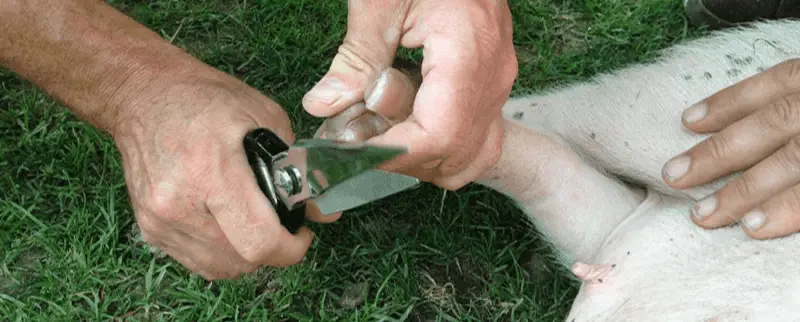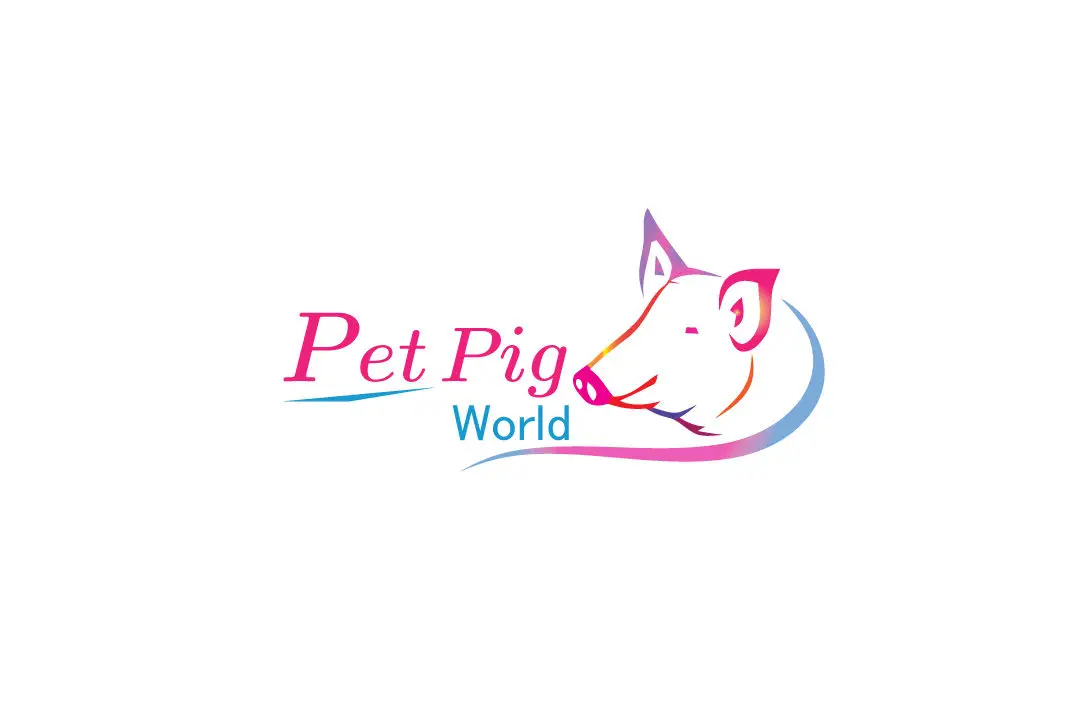The population of mini pig owners is continuously growing over the years and it’s important that every owner knows the proper way of caring for their mini pigs.
How to cut mini pigs hooves? Using a proper hoof trimming tool, cut evenly through to the heel and toe. Anyone handling the trimming must be gentle and ensure the pig is comfortable with that person to avoid resistance and accidents. Firmly trim down to level the growth with the heel or the soft pad of the hoof. You can use a dremel, a file, or a rasp to even out/smoothen rough edges.
Pigs or mini pigs also have two dew claws that may also need trimming. However, this part may be risky and must be carefully done without injuring or damaging the soft tissues within.
For those who don’t have any experience with trimming, it is advisable to seek professional help from a veterinarian or experienced farmers who know how to properly care for a pig.
Incorrect trimming could cause constant pain for the animal and may lead to negative behavior.
Mini pigs require the proper trimming tool which can be bought from poultry supply stores, certain pet stores and through online stores.
The trimming tool is similar to other tools used for horses, cows and other farm animals that need hoof trimming. There are kits or trimming sets that can be bought.
Untrimmed hooves could also cause body structure injury or locomotive damage for the pig which will make it difficult for them to walk or run. Trimming is part of a mini pig’s natural caring routine.
Generally, a healthy and average breed of pig may require hoof trims at least once a year.
We advise to watch a positive rated video online on how to properly trim your mini pig’s hooves. A live and visual guide will be very helpful for new owners.
Since trimming could be a challenging task especially for new owners or inexperienced handlers, it’s important to learn everything about hoof care.
The importance of trimming
Like what is stated above, if your mini pig doesn’t get a trim, it could cause some serious damage on their legs and bodies.
Mini pigs are commonly kept as indoor pets and would require trimming more than pigs that are usually walking or running around on solid, rough grounds.
To avoid structural damage (causes pain around the nerves and tissues for the legs) and locomotive issues, trimming is necessary for domesticated, indoor pigs like mini pigs.
If not cut or trimmed, your mini pig will refuse to walk around too much and may stay confined to one corner. This is risky and could lead to depression.
Animals that naturally enjoy roaming and exploring can feel depressed if they become unable to move freely without being in pain! This is why trimming is important.
When to trim your mini pig’s hooves
In general, there is no specific interval that should be followed when it comes to trimming care. The hooves and nails growth may vary depending on your mini pig.
But then, once again, an average pig may need hoof trimming once a year. Indoor pigs may need trimming more frequently than outdoor ones.
Signs that your mini pig needs a trim
The only sign is checking their hooves and nails. You know that it has grown too long and needs a trimming if it’s starting to begin curving inwards.
For some cases, curving outwards is unusual and requires trimming as soon as possible.
If it has gotten to a point where the curving turns into “curling“, that’s the definite sign that it MUST be trimmed immediately. Curling may cause pain for your mini pig.
Never let it reach this point as it will make it very difficult for your pig and for the person that will trim it for them.

Trimming tips for new mini pig owners
Trimming the hoof and nails is an important task that must be handled properly. For new and inexperienced owners, we’ll provide you with some points to remember.
- Earn your mini pig’s trust — Since this activity requires a lot of physical contact, a prey animal such as pigs may feel threatened or perceive this as a hostile action.
It’s important to earn your mini pig’s trust first to avoid resistance (and for some cases, biting may occur.) Most of the time, they dislike being picked up or being held down for too long.
Once they open up to you, they may even allow you to cuddle with them or enjoy sitting on your lap.
If you’ve reached this point of trust and friendship with your mini pig, you can finally try trimming them. Take it easy and slow to avoid accidents.
- Get your mini pig comfortable first — if the trimming gets too difficult, you might require assistance in holding your mini pig down. For this, let them get comfortable first.
Similar to the first tip, this second advice requires patience too. There are cases when owners still struggled with trimming even when their mini pig already clearly trusts them.
This happens because this is a new activity for your mini pig and should not be forced to deal with it.
If the first attempt does not go too well, you can stop for the day and try again the next day.
The more you force your mini pig, the more they’ll think they’re being threatened. They will become stubborn or may even run away upon seeing you.
Like the first tip, take it slow and easy. Give them a treat before or after your first attempts. This will condition them into thinking that they are being rewarded for participating in the trimming activity.
Once they are comfortable and ready to stay still or not move too much during the trimming, you can proceed with the task with ease.
- Get them used to the trimming as early as possible — young pigs may not need it right away, but the sooner they get used to the activity, the easier it will be.
Most owners have resorted to bringing their mini pigs to veterinarians or experts and pay them for the service. This can be added to your mini pig’s healthcare costs.
This cost can be avoided and help you save if you learn how to trim them by yourself. There will be lesser struggle for you and your pet if they also get used to it immediately.
If you successfully condition them to accept the trimming as if it’s a regular activity, you’ll be able to avoid a trip to the vet at the same time, saving time and money for yourself too.
- BE PATIENT. — This part has been mentioned repeatedly, but this is the key a mini pig owner needs to take note of. It may be truly difficult at first, but it’s inevitable and expected. All these tips and steps will be successful as long as you are patient.
Tusk trimming
Similar to hoof and nail trimming, you might be concerned about tusk trimming too. Tusks need to be properly maintained too.
Tusks are part of the jawbones and trimming it on your own can get dangerous. There is a chance of cutting through the gums and cause bleeding including infections.
This may also cause your mini pig to resist with full force like any other animal who does not like to be touched around their mouths.
Since this step can be very tricky, it’s highly recommended to seek help from a veterinarian or any reputable professional. For some cases, a pig may need to be sedated before getting their tusk trimmed.
It’s important to know that all pigs, wild or domesticated, male or female can grow tusks.
However, some of them may not grow long or large enough to stick out of their mouth.
Female pigs of all breeds usually have shorter or smaller tusks compared to male pigs.
Tusk trimming is situational because it should only be done under certain circumstances.
When to trim a pig’s tusks
All breed of pigs may require tusk trimming when it’s causing them problems or poses a threat for other animals, fellow pigs and people.
You will know that it’s time to cut or trim your mini pig’s tusks when..
— The tusks are growing in the wrong direction
If it happens to grow incorrectly, there’s a chance of it growing through the jowl area (the sagging skin around the chin or below the jawline) which will cause severe pain.
— The tusks are hindering the ability to eat
Sometimes, they might grow abnormally large and may cause problems for your mini pig when it comes to eating. This may cause appetite loss.
— The tusks are causing gum injuries
There is a chance for the tusks to cut through the gum area and your mini pig will feel sore when it happens. This can also cause appetite loss.
RELATED QUESTIONS
- Are mini pigs dangerous?
No, in general, domestic pigs are friendly or neutral most of the times to the point you can even allow them near children.
They’re very similar to dogs in behavior.
Though they are capable of biting, it rarely happens and probably only does when they are hurt, mistreated or threatened.
Pigs are prey animals and they would rather prioritize fleeing than facing danger themselves as it is too risky. Their only way of fighting is charging with their tusks if they have one and biting if they can reach.
Their aggression could also depend on the type of breed. Since most breeds are now domesticated, not many of them are dangerous.
Sometimes, it could also depend on their age or how they were raised.
Piglets that grew up lonely without social interaction tend to be unfriendly towards people and even other pigs. Older pigs could also be a bit aggressive when it comes to having an alpha male status.
However, another reason that they could be “dangerous” is if they are sick or carrying a disease.
Which is why, it’s important to have them checked medically and get vaccinated too.
- What is the life expectancy of a mini pig?
The life expectancy of an average pig is 15 to 20 years. This is long compared to their wild counterpart that only lives 4 up to 8 years.
Although the popular pet breed “mini pigs” are said to have shorter lifespan due to their complicated and selective breeding, many pig owners claim their pets lived up to 15 years and more.
This information brings us to the conclusion that there are times that they can live longer than their expected lifespan as long as they are healthy and loved.
